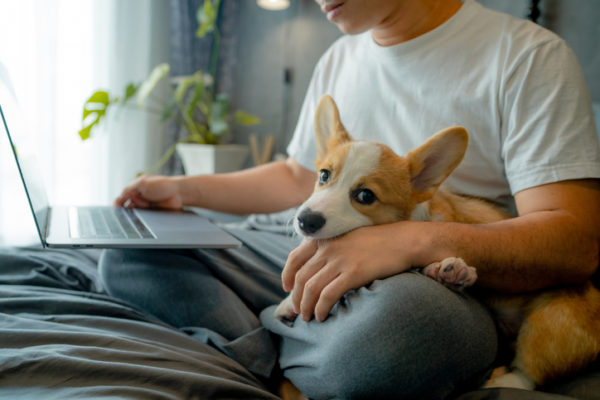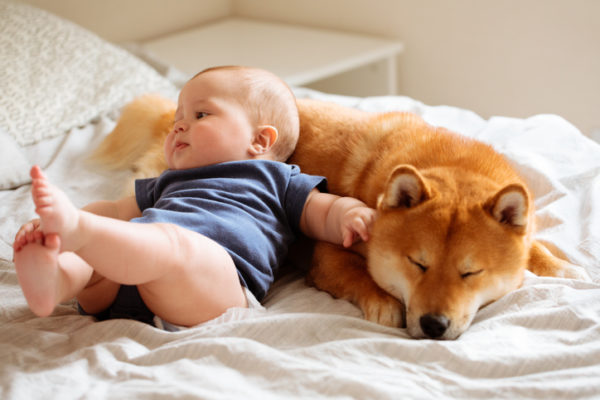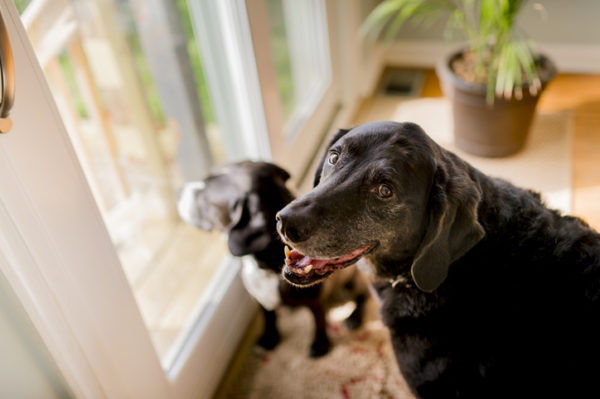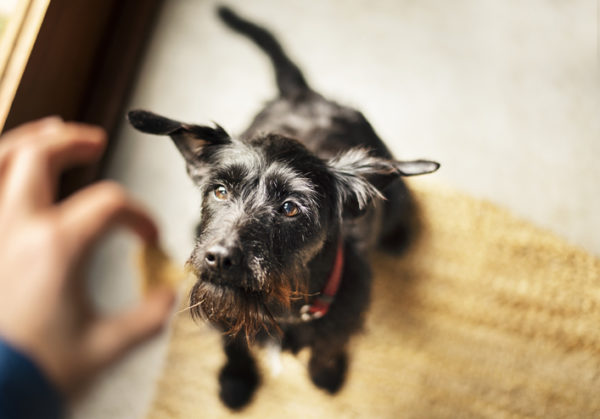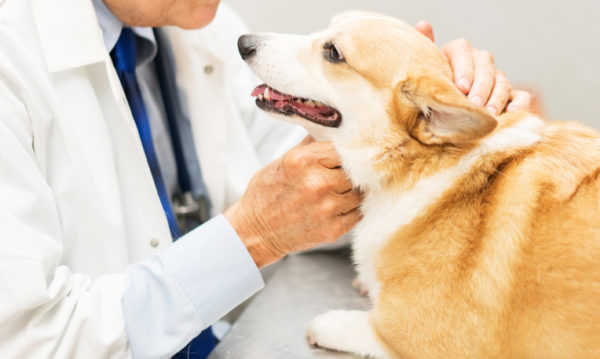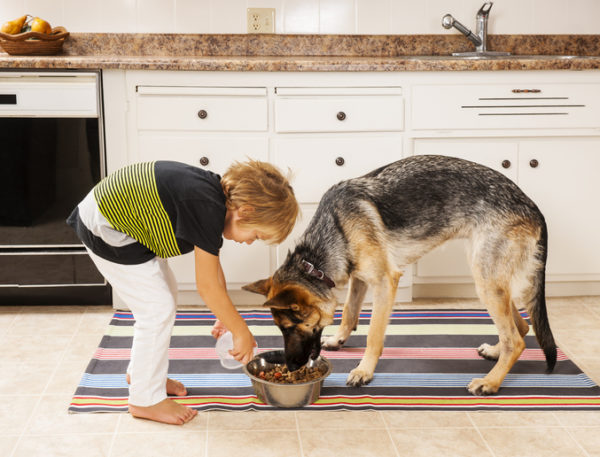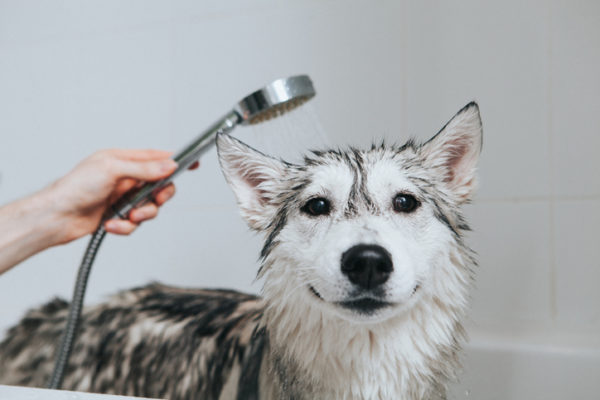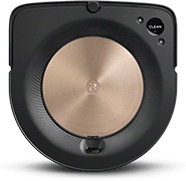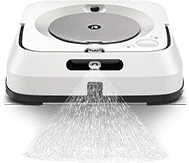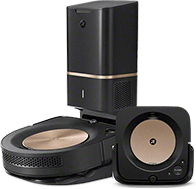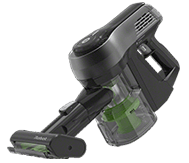Why Is My Dog Shedding So Much? (And How To Deal)
“Why is my dog shedding so much?” is the banner cry of everyone clutching the huge chunks of your fur they’ve just pulled out of the carpet, or the rug, or from under the tv stand.
So, why are they shedding so much? Is this normal? How do you stop it? Or, at least, what can you do to keep your sanity around so much hair?
We’re breaking it all down below – and you might be surprised that some of the excessive hair loss
Why Do Dogs Shed?
Yes, dog shedding is 100% normal. It can be one indication that you have a healthy dog. There are very few dog breeds that don’t shed. The golden doodle is one of the more popular among that list.
But, why?
Yeah, dogs could be “hairless” (like humans), but they have fur for several reasons:
- Regulate body temperature
- Protect their skin from sunburns
- Adapt to their environment
So, naturally shedding takes place to manage that for them. If they’re too hot, they’re going to shed. Especially if it’s just that time of year (Check out our dog shedding season blog post to learn about that.)
If they’re in a colder climate, they need more fur (mostly more of that really dense undercoating).
If they’re in a sunny place, they’ll need a denser top coat of longer, but lighter hair, that creates a little umbrella over their skin and less of that dense undercoat.
Essentially, their body is producing the type of fur that will keep them warm or cool. Since weather generally doesn’t stay the same, they’re going to shed more at certain times of the year.
(We’ll get to that…)
Why is my dog shedding so much all of the sudden?
Chances are, your dog is shedding just as much as any other dog in the area.
We know, you’re pulling your hand away from your dog and unleashing a whirlwind of swirling hair fibers and dander, and you’re thinking there’s no way this is normal.
In most cases, it’s just dog shedding season.
On the other hand, if you’re used to shedding season and it seems like your dog is suddenly shedding so much more than any other time in their life (or yours), there’s likely an underlying reason.
The first step you should take is to set up a vet appointment and have them look for underlying causes such as skin conditions, parasites, mites, fleas, mange, allergic reactions, dietary deficiencies, and so on.
Just like with humans, overall health affects outward appearance. If your dog seems slower, more tired, or their hair is lackluster or grainier than normal, that’s a good indication that there may be an internal health issue that’s adversely causing more shedding.
Other reasons your dog may have excessive shedding:
- Their bodies are reacting poorly to the food (they can’t tell you when it makes them feel unwell, after all)
- Shampoo is too harsh for their sensitive skin (check with your vet about the brand/ skin conditions)
- They’re stressed out (particularly if they’re nervous dogs)
- They’re a little dehydrated due to weather changes or periods of intense heat (or they really like to play, but need some encouragement drinking enough water)
In the market for a gift for a dog mama in your life? Check out our blog:
What is regular shedding? What is excessive shedding?
Dogs shed all of the time, and while it’s normal, it’s just as normal for you to wonder if they’re shedding too much (especially when their hair is all over the place).
If you ask a veterinarian or even a dog dermatologist, they might tell you they’re particularly worried about shedding if it’s accompanied by bald patches.
If they have baldness, they may have a fungal infection, or a bacteria, or they may be pulling it out themselves with scratching or itching. It could also be any one of about a dozen other internal and skin issues or illnesses (such as a thyroid condition or hormonal imbalance).
What months do dogs shed the most?
Indoor animals are more likely to shed consistently year-round, but there are times they’ll naturally shed a little more, depending on their environment.
Those times are generally spring (March, April, and May) and fall (September, October, November).
In spring, they’re shedding their thicker undercoat – which keeps them warmer throughout the winter – to prepare for the heat of the summer.
In fall, they’re actually growing more hair, but they’re taking on more of their warmer undercoat and therefore shed a lot of their topcoat to make room. It’s also to help them absorb more of the sun (which the topcoat was protecting their skin from).
Do all dogs shed?
Most of them do, but surprisingly, there are about 40 non-shedding dog breeds, and several that shed minimally.
Now, keep in mind, non-shedding does not mean hypoallergenic (no dog truly is, all dogs still produce a protein that causes allergic reaction). It also doesn’t mean that they don’t shed somewhat if they’re sick or have some other skin or internal issue. Keep that in mind as you’re looking for a dog breed). It also doesn’t mean that they don’t shed somewhat if they’re sick or have some other skin or internal issue. Keep that in mind as you’re looking for a dog breed.
What are the worst shedding dogs?
If you’re looking to get a new doggo, but you or someone in your household has an allergy, or you simply don’t want to deal with all the hair that comes with being a pet parent, then maybe these aren’t the breeds for you:
- Labrador Retriever
- German Shepherd
- Bernese Mountain Dog
- Great Pyrenees
- Siberian Husky
- Akita
- Corgi
- Golden Retriever
All of these dogs are considered really heavy shedders, largely because their coat type. They have a double coat or have really long hair. Some were also originally bred in colder regions of the world, so their longer coats are denser. (Gotta love those longhaired dogs.)
It’s very likely you’re in a much warmer place than, say, Siberia… so if you’re averse to all that hair, you might want one of these lower shedding or non-shedding breeds.
Looking for the best dog vacuum? Check out our gift guide:
What are the lowest shedding dog breeds?
Most of the lower shedding dog breeds are, expectedly, short-haired dogs or those with a single coat (rather than both a top coat and undercoat, they’ll usually only have a topcoat).
Those with a single coat may actually have very long hair, such as a Shih Tzu (their tails especially), they just don’t tend to shed that coat. That’s not saying they don’t, just that you’ll see far less shedding than with most breeds.
Some non-shedding breeds include:
- Poodle (including the golden doodle)
- Bichon Frise
- Miniature Schnauzer
- Shih Tzu
- Yorkshire Terrier
Now, because many of these breeds have longer hair, they’ll still need to visit the groomers frequently for haircuts (unless you do it yourself). Their hair tends to grow longer and faster than other breeds.
Do puppies shed?
Interestingly, there’s no definitive answer on this, because it just depends on the breed. Some puppies won’t shed until they’re growing an adult coat. Others start shedding right away.
Some will also shed more than others.
That said, you’re still likely to see shedding from your puppy at some point. It usually starts at 4-6 months after they’re born.
How long does shedding last in dogs?
Shedding season is actually 2 seasons, each lasting around 3 months, as we’ve already covered.
But there’s generally a peak shedding point of the year, just before summer, that lasts 2-4 weeks.
There’s no standard on when this happens, as it depends on the breed and where you live, but you’ll likely notice that additional burst of hair when it happens. Just know that it will die down.
Other than that, expect that your dog will shed – at least some – year-round.
When Should I Be Worried About Hair Loss?
In most cases, hair loss isn’t something too concerning unless you’re seeing bald spots or you notice that your dog bites and scratches so much they’ve lost hair.
That’s when there might be an issue.
Should I take my dog to the vet?
If you do see those bald spots, then yes, go to the vet. Generally bald spots on a dog are an indication of either skin problems (such as a bacteria) or an internal issue.
A poor diet may cause a lackluster coat and additional shedding, but a digestive issue or allergic reaction will notably cause more harm and that’s visible with whole patches of your dog’s fur missing.
Should I take my dog to the groomer?
The first move should always be to call a Doctor of Veterinary Medicine (DVM). They’ll be able to determine if the issue really is something major that requires medical assistance.
Taking your pooch to the groomer won’t help with internal issues and won’t prevent stronger shedding in the future.
However, if you’re just trying to reduce the amount of hair they have on their body during seasonal changes, or trim their long hair before it becomes matted, then the groomer will know how to thin their coat for the short term.
Can I Prevent My Dog from Shedding?
Short answer: no.
Long answer: no, but you can definitely reduce the amount of shedding, and the amount that spreads all over your home, clothes, and everything else in your universe.
In most cases, it’s all about your dog’s nutrition. If they’re not eating a good, high-quality, healthy diet, they’re likely to shed more.
Other things you can do to reduce the amount of loose hair your furry canine friend loses, are:
- Brush them once a day with the right brush – a hard bristle brush
- Give them healthy skin and fur supplements recommended by their vet
- Spray a conditioner on your dog
- Give your dogs healthy fat, both on their fur and in their food
- Bathe and shampoo your dog
Good nutrition should be a cornerstone of their health, and should contain a lot of omega-3 fatty acids, to help with hair health.
While that will make their coat nice and shiny and healthy, and certainly work to reduce the amount of hair your dog sheds, it’s not generally enough to alleviate your pet dander and constant vacuuming (though a Roomba® robot vacuum could help with that).
One of the most proactive ways to eliminate a lot of hair is to groom your dog daily with a pet hair brush or grooming comb.
Regular brushing actually increases oil production. This will help in the long term because it protects their skin and get the hair off while brushing.
There are also a few key supplemental ingredients that affect hair growth and how fast that hair dies and falls out. It’s largely those fatty acids that should be in their dog food. But you can often find them in supplements to give to your dog daily (with the approval of your veterinarian).
Other ways to add hair healthy vitamins to your dog’s diet, is to simply feed them molasses and/or coconut oil (please check with your vet, as your dog breed may not tolerate sugar or food items as well as others).
For most medium to large sized dogs, you can give them a tablespoon of coconut oil a day, or give it to them in a coconut oil treat, but you might have to start with a smaller dose to see their reaction.
(p.s… you can also melt coconut oil down, mix it with water, and spray it on your dog using a spray bottle. This dog hair conditioner can sooth skin irritation and hydrate their skin, which helps tamper shedding).
Molasses contains some vital vitamins that’ll help reduce heavy shedding, including copper, B-vitamins, iron, and zinc.
Most dogs will like this treat (up to a teaspoon a day), but again, start with a small dose to see how they tolerate it.
Like any other treatment, you should consult your vet and start with one at a time, to understand how they react to it without interference from other solutions.
How Can I Manage My Dog’s Shedding?
While you can do a lot to help reduce the amount of hair your dog unleashes into your atmosphere, there’s only so much you can do.
You’re still going to face some matting, and maybe some hair tangles in your vacuum (unless you have a Roomba®- those rubber brushes sure are handy).
So to manage (cope without wanting to rip your own hair out), there are a few things you can do:
- Do everything in the section above, to reduce the amount of hair to begin with
- Invest in an air purifier to help filter out some of the dander your pet will inevitably disperse (whether they’re non-shedding or double-coated)
- Get yourself a Roomba® robot vacuum so you don’t have to manually vacuum every day, all day. It’ll also cut down on the amount of hair building up under your tv stand and couch. Not to mention our dual multi-surface rubber brushes (on specific models) are designed to not tangle with pet hair.
- Use pet hair remover tools (such as a lint roller) to clear upholstery and your clothes from pet hair right after your dog has brushed against you or left their hair pile on the couch. (Here’s how to get dog hair off your couch, by the way!)
- Keep your clothing in a closed closet at all times to keep it free of pet hair (at least until you’re trying to swerve around them on your way out of the door).
- Your washer and dryer can eliminate a lot of the hair on clothing and linens rather easily, with just a wash (and there are a few cool gadgets you can add to the wash to boost the hair lifting power).
- If pet hair is a real problem in your home, consider containing your pet to certain areas of your home to reduce the amount that spreads into quarantined areas.
- If you’re going to brush your dog, do it outside or in a contained room in your home (such as a mudroom or garage).
Those are just a few ways to make your home a little less pet fur crowded, and set your mind at ease a little.
Take vacuuming and mopping off your list — all at once.
Let iRobot take care of the vacuuming and mopping so that you can take care of everything else.
How do I brush my dog?
It doesn’t seem like rocket science (and clearly it isn’t), but there’s still a method to the hair madness that is pet grooming.
Pet owners, take note, because there are a few highly efficient ways to brush your dog, depending on how bad their hair is and the level of grooming.
For every day dog brushing: a grooming tool (pet hair brush) is usually fine enough. Run it over their fur daily, like you would a hair brush on your own hair, until you no longer hit snags and you don’t pull up as much hair.
You’re unlikely to get it all up in one sitting. In fact, you can brush for hours and they’ll keep shedding.
But you can at least get those really loose hairs and brush until you’re not pulling up as much.
(Also, try different types of brushes, such as undercoat brushes and combs. There’s no universally great brush for every dog.)
For grooming during shedding seasons: Consider sending your dog to the groomer, because they’ll have the right shedding tools to really thin their type of coat properly.
If you want to do it yourself though:
- Give your dog a thorough bath (don’t bathe too often though)
- Dry you dog’s coat with a towel
- If you have a powerful blow dryer, use that to fluff up their fur and help push any of the lose fur away (groomers typically use a powerful reverse vacuum-like hose)
- Run an undercoat brush through their fur in short strokes
- Use a comb to ensure you’ve detangled all of their hair
That’s the gist of it.
How often should I bathe my dog?
Dog skin produces natural oil that keeps their skin healthy. But if they’re bathed too often, it can leave their skin dry and dehydrated, and lead to skin infections.
If you’re searching around the internet, you’ve probably seen a few places mention bathing every 3 months, at the very most. Most of this advice is centered around the reality that most people don’t use a specialized doggie shampoo. They use their own shampoo.
But our shampoos are often too harsh for your dog’s skin and hair, and result in that dry, flaky skin.
You can, in fact, shampoo your dogs every 2 weeks with the right shampoo, but check with your vet to see what is best for your dog’s particular breed.
Dog hair can be a real nuisance, but with the right tools (and knowledge), you can cut down the amount of hair you constantly have to clean up around your home (and that you feel tickling your face but can’t seem to get off).
It’s just a matter of understanding your dog, and their fur.

